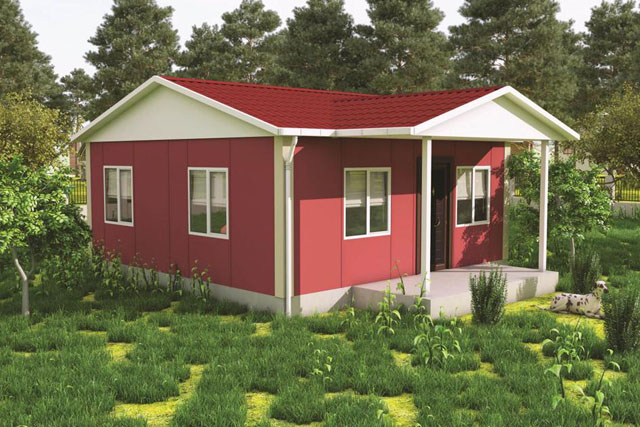Klasik arkeolojinin bir teorisine göre dünyada ilk defa demir cevherinin işlenmesi, antik çağlarda şimdiki Türkiye’de Kaz dağları’nda çıkan büyük orman yangınında, toprağın içerdiği demire şekil verilebilecek derecede ısınması sonucunda meydana gelmiştir. Bir diğer teori ise, insanların dünyaya düşen meteorlar sayesinde demiri işlemeyi öğrendikleridir. İnsanlar, büyük ihtimalle meteorla gelen metali dövüp, işleyerek ilkel araç-gereç ve silah yapabildiler diye kabul edilir.
Demir ve çelik 5000 yıldır kullanılmakla beraber, iki yüzyıl öncesine kadar yalnızca silah ve eşya yapımında yer almışlardır. Ancak 18. yüzyılda İngiltere’de ham demir üretiminin başlamasıyla birlikte demir yapı malzemesi olarak kullanılmaya başlanmıştır.
Demir kullanılarak inşa edilen ilk yapılar köprülerdir. Kullanılan ilk malzeme fonttur. Fontun basınç dayanımı yüksek, çekme dayanımı ise düşüktür.
Font kullanılarak inşa edilen ilk köprü yaklaşık 1778 yılında tamamlandığı tahmin edilen İngiltere’de, Severn nehri üzerindeki Coalbrookdale Köprüsü’dür. Abraham Darby tarafından yaptırılmıştır. Abraham Darby taş kömürü kullanarakkok kömürü üretebilmeyi ve demiri kok kömürü kullanarak işleyebilmeyi ilk başaran kişidir. (1700’lere kadar demirin işlenmesinde zengin karbon içeriği nedeniyle odun kömürü kullanılmaktaydı, ancak o yıllarda Avrupa ormanlarının tükenmesi demirin işlenmesini zorlaştırmıştı. İngiltere’de bol miktarda taş kömürü mevcuttu, fakat taş kömüründe yeterli karbon yoktu. Bu nedenlerle, kok kömürü çelik çağını başlatan büyük bir buluş olarak kabul edilir.)
İlerleyen yıllarda Bessemer (1855), Siemens-Martin (1864), Thomas (1879) yöntemlerinin bulunmasıyla ham demirin sıvı haldeyken arıtılması sağlanmış ve dökme çelik üretimi olanağı ortaya çıkmıştır. Böylece 1800’lü yılların sonlarından itibaren dökme çelik, en çok üretilen cins olmuştur. Özellikle 20. Yüzyılın başında elektrik fırınlarının da kullanılmaya başlanmasıyla da çelik yapı tekniklerinde büyük ilerlemeler meydana gelmiştir.
Çelik yapıların hızlı inşa edilebilmesi nedeniyle birinci dünya savaşı sonrasında, ikinci dünya savaşı sırası ve sonrasında çelik yapı inşası yaygın olarak gözlenmiştir. Birinci dünya savaşı sonrasında dağılan sanayinin yeniden üretime geçebilmesi amacıyla çelik inşası tercih edilmiştir. İkinci dünya savaşı sırasında ise Alman ordusunun Volga Nehri’ne kadar onlarca devletin arazilerini işgal ederek, sanayi binalarının donanımlarını söküp yeni arazilere taşıması ve bu arazilerde hızlı sanayi üretimine geçebilmesi ancak çelik taşıyıcı sistemlerin kullanılması ile mümkün olmuştur.
Savaş sonrasında ise, sanayi, sosyal-spor tesisleri, okul ve konut binalarının hızla yapılması ihtiyacı, ancak çelik kullanımı ile mümkün olabilmiştir. Böylelikle çelik yapı taşıyıcı sistemlerinin hesaplama yöntemlerinin ve tasarım esaslarının gelişmesi mümkün olmuştur. Bu süreçte kaynak teknikleri de gelişmiştir.
Demir, yerkabuğunda en çok bulunan metaldir ve kabuğun yaklaşık olarak % 4,5 unu teşkil eder. Meteorlar haricinde serbest bir eleman olarak bulunmaz. Doğada demir cevheri;
– Oksitler [magnetit (Fe3O4) ve hematit (Fe2O3)],
– Hidroksitler [geotit (FeO(OH)) ve limonit (FeO(OH)·nH2O)],
– Karbonatlar [siderit(Fe2CO3)]
halinde bulunur (Şekil 1). Hemen tüm cevher türleri Silisyum Oksit (Si2O) ihtiva etmektedirler. Çoğu cevher türleri az miktarda Fosfor, Alüminyum, Kükürt, vb. elementler içermektedir.
- a) Magnetit
b) Hematit
c) Geotit
d) Limonit
e) Siderit
Demir cevheri, yüksek fırında kok kömür ile yakılıp ergitilerek ham demir elde edilir. Kok kömürünün iki fonksiyonu vardır; birincisi gerekli sıcaklığı sağlamak, ikincisi ise demir ile kimyasal reaksiyona girmek. Kok kömürdeki karbon demir ile alaşım meydana getirir, ayrıca bu alaşım yani ham demir cevherden gelen Silisyum, Alüminyum, Kükürt gibi maddeleri de ihtiva eder. İşlem sonunda cüruf ve yüksek fırın gazları da ortaya çıkar. Cüruf, yoğunluğu az olduğundan ergimiş ham demirin üzerinde toplanır ve yüksek fırındaki cüruf deliğinden dışarıya atılır. Elde edilen ham demirin karbon oranı yüksek (%3-5) olduğundan şekil değiştirmeye ve kaynaklanabilmeye elverişli değildir. Bu nedenlerle ham demir işlenerek, kullanılan yöntem ve katkılara bağlı olarak çelik veya dökme demir üretilebilir. Dökme demir kupol fırınında üretilir. İçeriğinde yaklaşık olarak %2~4 oranında karbon vardır. Çelik ise Siemens-Martin, Elektrik Arkı, Oksijen Üfleme gibi yöntemlerle elde edilebilir. Bu yöntemler sonucunda dökme çelik, dövme çelik veya hadde ürünü çelik elde edilir.



